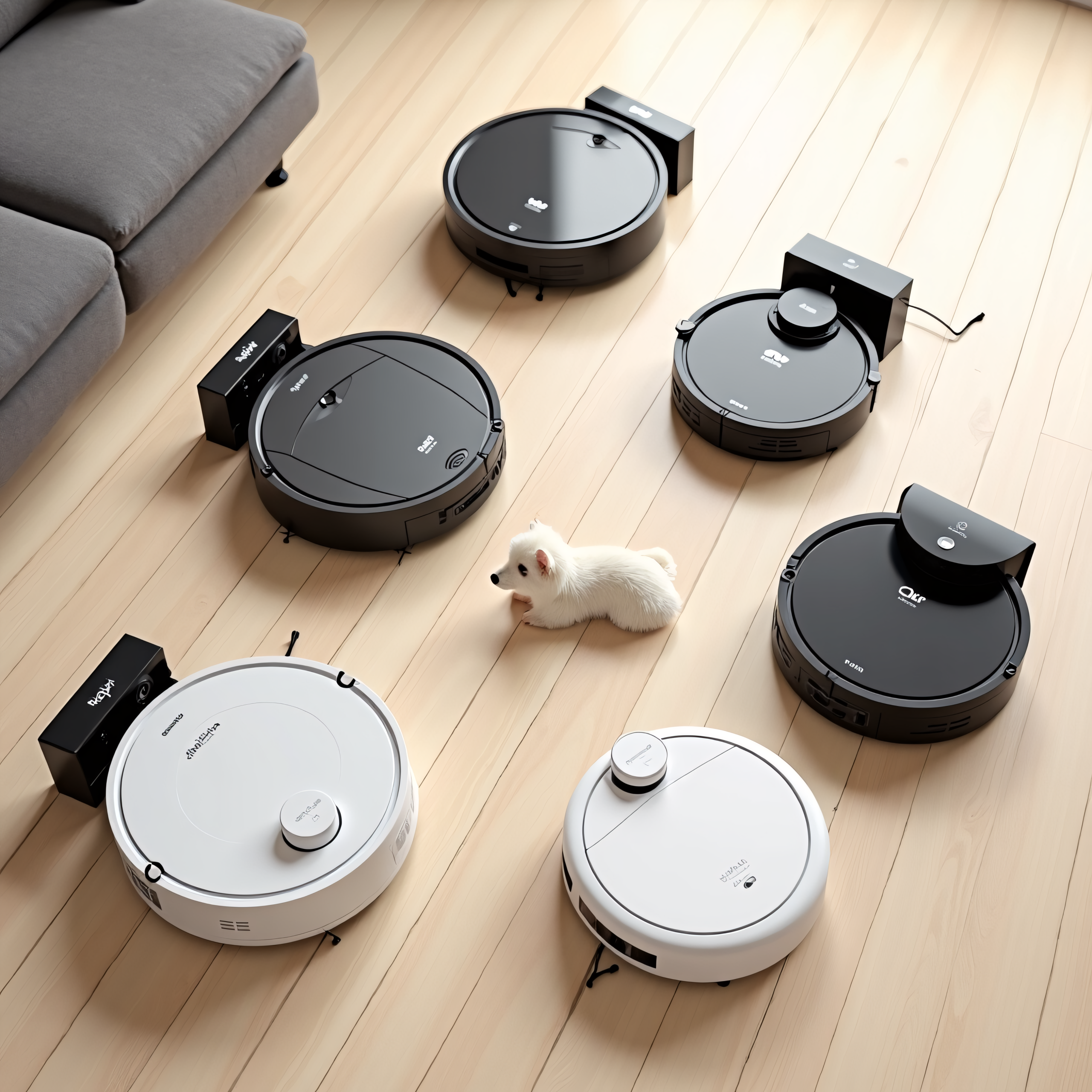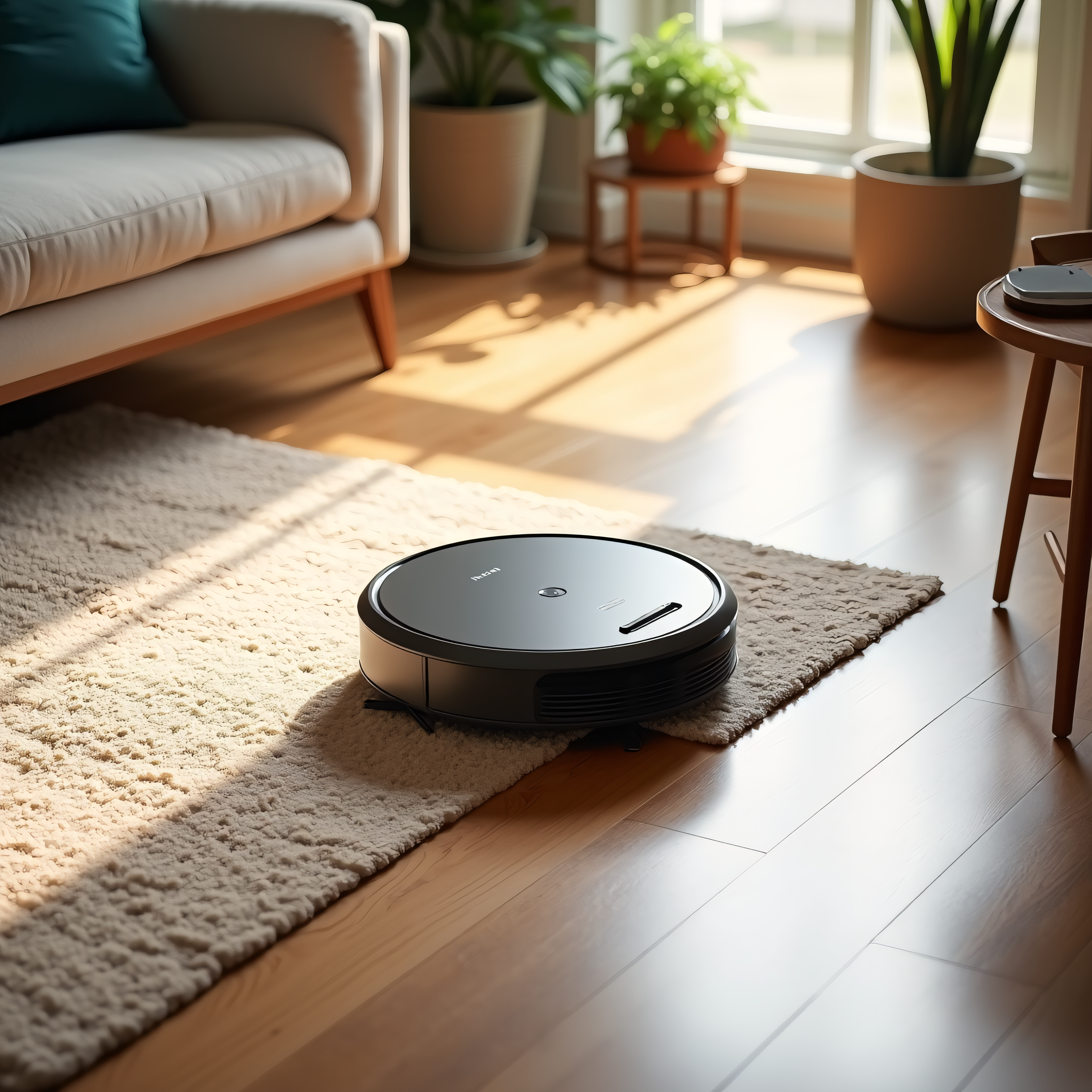estimated reading time: 6 minutes
I. Introduction
Are you tired of spending precious weekends wrestling with a traditional vacuum cleaner? Do you dream of a clean home without the constant chore of cleaning? Then you’ve come to the right place! The rise of the robot vacuum has revolutionized home cleaning, offering a convenient and efficient solution to a common problem. These autonomous cleaning devices, sometimes affectionately called “smart bot sweepers”, are becoming increasingly popular, and understanding their capabilities is key to making an informed decision. This comprehensive guide will delve into everything you need to know about robot vacuums, from their inner workings to the various types available, ultimately helping you determine if this technology is the right fit for your home.
II. What Exactly Is a Robot Vacuum?
A robot vacuum is a small, automated cleaning device designed to navigate floors independently and remove dirt, dust, and debris. It achieves this through a combination of sophisticated technology and simple mechanics. The core functionality relies on several key components: sensors detect obstacles and prevent falls, while brushes (side, main, and edge) gather dirt and direct it into a central suction system. The collected debris is stored in a dustbin, which needs to be emptied periodically. Most models also include a charging dock, to which the robot automatically returns when its battery is low.
The first robot vacuum, the Roomba, debuted in 2002, marking a significant step in home automation technology. Since then, the technology has evolved dramatically, with improvements in navigation, suction power, and smart home integration. Unlike traditional vacuums, robot vacuums offer hands-free operation, requiring minimal user intervention beyond emptying the dustbin and occasional maintenance.
Source: ThinkCrucial
More on blog: Robot Vacuums: A 2025 Guide to Effortless Cleaning & Reclaiming Your Time
III. Why Choose a Robot Vacuum? Benefits Explained
The most significant advantage of a robot vacuum is its ability to save time. Instead of dedicating hours each week to vacuuming, you can schedule your robot vacuum to clean while you’re at work or running errands. This automation contributes significantly to convenience, allowing you to focus on other tasks or simply relax. Regular, automated cleaning also prevents dirt buildup, leading to a cleaner and healthier home environment.
Furthermore, robot vacuums are incredibly accessible, offering assistance to individuals with mobility limitations or physical challenges who might find traditional vacuuming difficult. Their ability to reach under furniture and into tight spaces ensures thorough cleaning in areas often neglected by traditional methods. While they require some maintenance, such as emptying the dustbin and cleaning the brushes, this is generally less time-consuming than maintaining a traditional vacuum cleaner.
Source: Aeno
More on blog: Conquering the Clean
IV. Exploring the Types of Robot Vacuums
The market offers a wide array of robot vacuums, each with its own set of features and capabilities. Let’s explore the main categories:
- Basic Robot Vacuums: These entry-level models primarily focus on vacuuming, offering a budget-friendly option for basic cleaning needs. They typically lack advanced features like mapping or self-emptying capabilities.
- Robot Mops vs. Robot Vacuums: While some models combine vacuuming and mopping functions (2-in-1 robot vacuums), dedicated robot mops excel at cleaning hard floors. The effectiveness of 2-in-1 models can vary, with some offering superior performance in vacuuming than mopping.
- Self-Emptying Robot Vacuums: These models offer a significant upgrade in convenience by automatically emptying the dustbin into a larger container within the charging dock. This reduces the frequency of manual emptying but comes at a higher price point. The capacity of the base station varies between models.
- Combination/5-in-1 Cleaning Robots: Some high-end models boast multiple cleaning functions, including vacuuming, mopping, sweeping, dusting, and edge cleaning. While these offer all-in-one convenience, their effectiveness in each function might not match dedicated appliances.
- Robot Vacuums with Advanced Mapping: These models use either Lidar or camera-based technology to create a map of your home, allowing for more efficient cleaning and features like room-specific cleaning and virtual walls to prevent cleaning in specific areas. vSLAM (Visual Simultaneous Localization and Mapping) offers a cost-effective alternative to Lidar, though accuracy may vary.
Source: Ecovas
More on blog: The Ultimate Guide to Robot Vacuums/ Buying the Right Roomba/A Comprehensive Guide to the Best Brands & Models
V. Key Features to Consider
Choosing the right robot vacuum depends on several key features:
- Suction Power: Measured in Pascals (Pa), suction power determines the effectiveness of dirt and debris removal. Higher Pa ratings generally indicate stronger suction, crucial for carpets and homes with pets.
- Battery Life & Charging: Longer battery life translates to longer cleaning sessions before needing a recharge. Auto-charging and return-to-base functionality are crucial for uninterrupted cleaning.
- Navigation Technology: Random bounce is the simplest but least efficient, while gyroscope-based navigation offers improvement. SLAM (Simultaneous Localization and Mapping) and vSLAM provide the most advanced and accurate navigation for efficient coverage.
- Brush Types: Different brush types are better suited for various floor types; consider the materials of your floors when choosing a model.
- Filter Types: HEPA filters are essential for allergy sufferers, trapping microscopic allergens and pollutants.
- Smart Home Integration: Compatibility with Alexa, Google Assistant, and other platforms enables voice control and integration with your existing smart home ecosystem. This can elevate the “smart bot sweeper” experience.
- App Control & Customization: A user-friendly app allows for scheduling, selecting cleaning modes, and setting up virtual walls or no-go zones.
- Dustbin Capacity: Larger dustbins reduce the frequency of emptying, a significant factor in convenience.
Source: Blogs.Switch
More on blog: Mapping, Models, Troubleshooting & Deals/ A Model-by-Model Guide to Navigation & Smart Features
Choosing the Right Robot Vacuum for Your Home
- Floor Type: Carpet requires stronger suction than hardwood or tile.
- Pet Ownership: Pet hair necessitates models with tangle-free brushes and strong suction.
- Home Size & Layout: Advanced mapping is beneficial for larger homes or complex layouts.
- Budget: Prices range significantly depending on features and capabilities.
- Allergies/Sensitivities: HEPA filters are crucial for allergy sufferers.
- Smart Home Ecosystem: Choose a model compatible with your existing smart home devices.
Robot Vacuum Maintenance & Troubleshooting
Regular maintenance ensures optimal performance:
- Emptying the Dustbin: Empty frequently, depending on usage and dustbin capacity.
- Cleaning the Brushes: Remove hair and debris regularly to maintain suction.
- Replacing Filters: Replace filters according to manufacturer recommendations.
- Sensor Maintenance: Keep sensors clean to ensure accurate navigation.
- Troubleshooting Common Issues: Consult manufacturer support resources for troubleshooting common issues such as getting stuck, connectivity problems, or decreased suction.
Conclusion
Robot vacuums offer a convenient and efficient solution to the age-old problem of home cleaning. They provide automation, time savings, and improved hygiene. However, selecting the right model depends on individual needs, budget, and home environment. By carefully considering the features and capabilities discussed in this guide, you can make an informed decision and choose the perfect robot vacuum to enhance your home cleaning experience.
FAQ
- Q: How long does a robot vacuum battery last? A: Battery life varies greatly depending on the model and usage, ranging from 60 minutes to over two hours on a single charge.
- Q: Are robot vacuums good for pet hair? A: Some models are specifically designed for pet hair, featuring strong suction and tangle-free brushes.
- Q: How often should I empty the dustbin? A: This depends on the dustbin capacity and the frequency of use, but generally, it’s recommended to empty it every few cleaning cycles.
- Q: Do all robot vacuums have mapping capabilities? A: No, basic models rely on simpler navigation methods, while more advanced models use mapping technology for efficient cleaning.
- Q: How much do robot vacuums cost? A: Prices vary widely, ranging from a few hundred dollars to over a thousand dollars, depending on features and brand.


